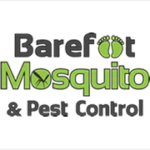Termites are beneficial organisms that eat dead wood and turn it into rich humus in the wild, but when they start eating your home, it’s time to call Barefoot Mosquito and Pest Control. Subterranean termites, the most common wood-destroying organism in this area, are social insects that infest homes and businesses. They travel from the soil into your home, consume the wood, and return to the soil. That’s why termite control in San Antonio is essential to protect your property from costly damage.
Termites are beneficial organisms that eat dead wood and turn it into rich humus in the wild, but when they start eating your home it’s time to call Barefoot Mosquito & Pest Control. Subterranean termites, the most common wood-destroying organism in this area, are social insects that infest homes & businesses. They travel from the soil into your home, consume the wood and return to the soil.
Here are a few helpful tips for recognizing termites in your home. Look for damage to sheetrock, wallpaper or doorjambs, especially in plumbing areas. Also look for small areas of dirt called “castles” on walls, baseboards, doorjambs or window areas. Inspect the perimeter of your home for mud tubes. Subterranean termites use these mud tubes to travel into your home. They also enter around water and sewer pipes or any other accessible openings such as hairline cracks in the slab. The swarmers or reproductives are small black-bodied insects with clear wings that are twice as long as their bodies. Soldiers have cream-colored bodies with brown heads. Workers entire bodies are cream-colored and are 1/8 to 3/8” in length.
There are many species of termites that can cause problems but subterranean termites are the primary culprit in the San Antonio area. One of the most effective treatments for these termites is a soil treatment applied by a professional exterminator using the product Termidor.
Termites are social insects. This means there is a division of labor among the different types of individuals. Most ants, bees and wasps are also social insects. Nearly all termite species have reproductive and soldier castes, but in most of the more primitive species, the typical duties of the workers (nest building, food gathering and feeding of the reproductives and soldiers) are handled entirely by the nymphs which are young or juvenile termites. Even in species with workers, the older nymphs may do some of the work.
Workers and nymphs of subterranean termites perform all the work of the colony and also cause all the damage to your home. Soldiers serve only to defend the colony. They can’t eat wood. They, together with reproductives, are fed by the workers. Both workers and soldiers are eyeless and therefore blind.
Winged adults are referred to as primary reproductives (often called swarmers). They emerge from the colonies on recolonizing flights during certain seasons of the year. In South Texas, it is between March and May. After these flights, a male (king) and female (queen) will pair up, lose their wings and construct a small cell in the soil. There they will mate, lay eggs and rear the first group of workers for the new colony.
Each colony supports itself independent of other colonies, although recent research suggests closely related colonies may share workers during part of the year.
Other types of termites, such as drywood termites, don’t have to travel to the soil. They, unlike subterranean termites, live in the wood all the time. Drywood termites are primarily found in areas with high humidity such as the Corpus Christi or Houston areas. The normal treatment for these requires tenting your home and the use of gas fumigation.
Signs of Termite Infestation
Here are a few helpful tips for recognizing termites in your home:
- Look for damage to sheetrock, wallpaper, or doorjambs, especially in plumbing areas.
- Check for small areas of dirt called “castles” on walls, baseboards, doorjambs, or window areas.
- Inspect the perimeter of your home for mud tubes—subterranean termites use these to travel into your home.
- Watch for swarmers (black-bodied insects with clear wings) or workers (cream-colored termites 1/8 to 3/8 inches long).
If you notice any of these signs, scheduling a termite inspection in San Antonio is the best way to confirm an infestation and take action before severe damage occurs.
The Importance of Professional Termite Control
There are many species of termites that can cause problems, but subterranean termites are the primary culprit in the San Antonio area. One of the most effective treatments for these termites is a professional soil treatment using Termidor. A proper termite control plan ensures your home is protected from ongoing infestations, saving you from costly repairs.
Termites are social insects, meaning there is a division of labor among different colony members. Workers and nymphs cause all the damage, while soldiers defend the colony. Winged adults, known as swarmers, emerge during certain seasons—between March and May in South Texas—looking to establish new colonies.
Other types of termites, such as drywood termites, do not travel to the soil. Instead, they live in wood all the time and are more common in humid areas like Corpus Christi or Houston. The standard treatment for drywood termites involves tenting your home and gas fumigation.
Protect Your Home with a Termite Inspection
If you suspect termites are invading your home, don’t wait. A termite inspection in San Antonio can help detect the issue early and provide the best treatment options. Whether you need an inspection or long-term termite control in San Antonio, Barefoot Mosquito & Pest Control has the expertise to protect your property.

